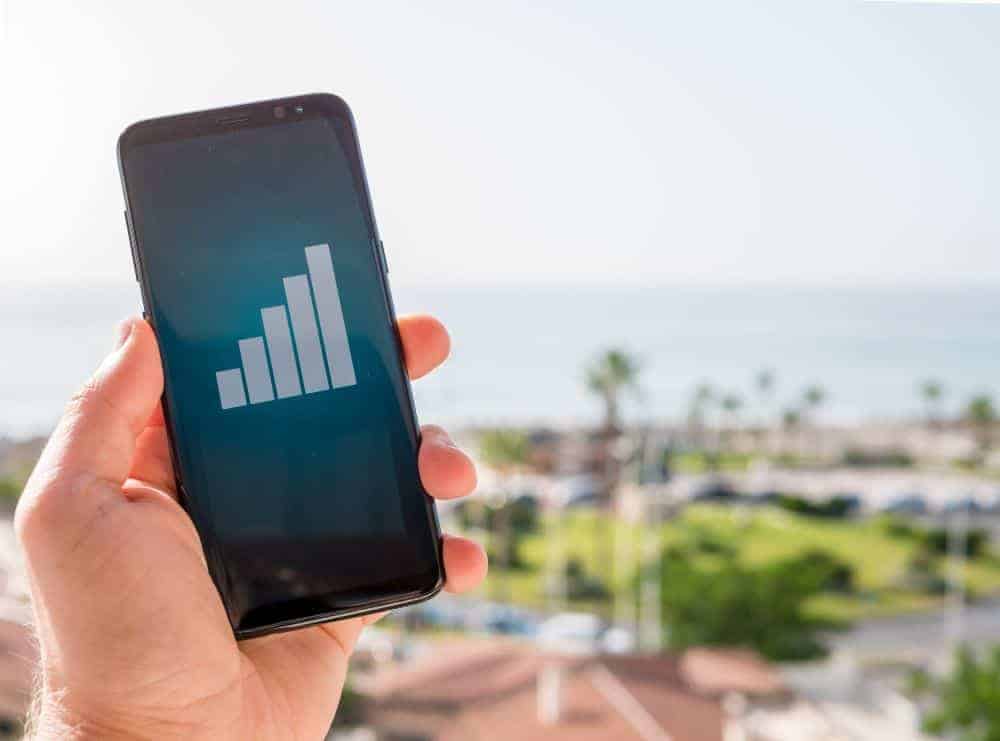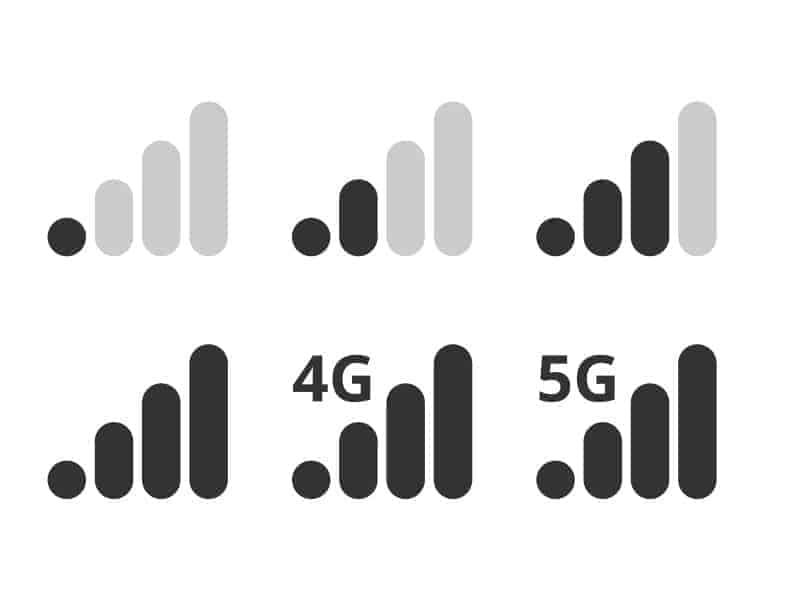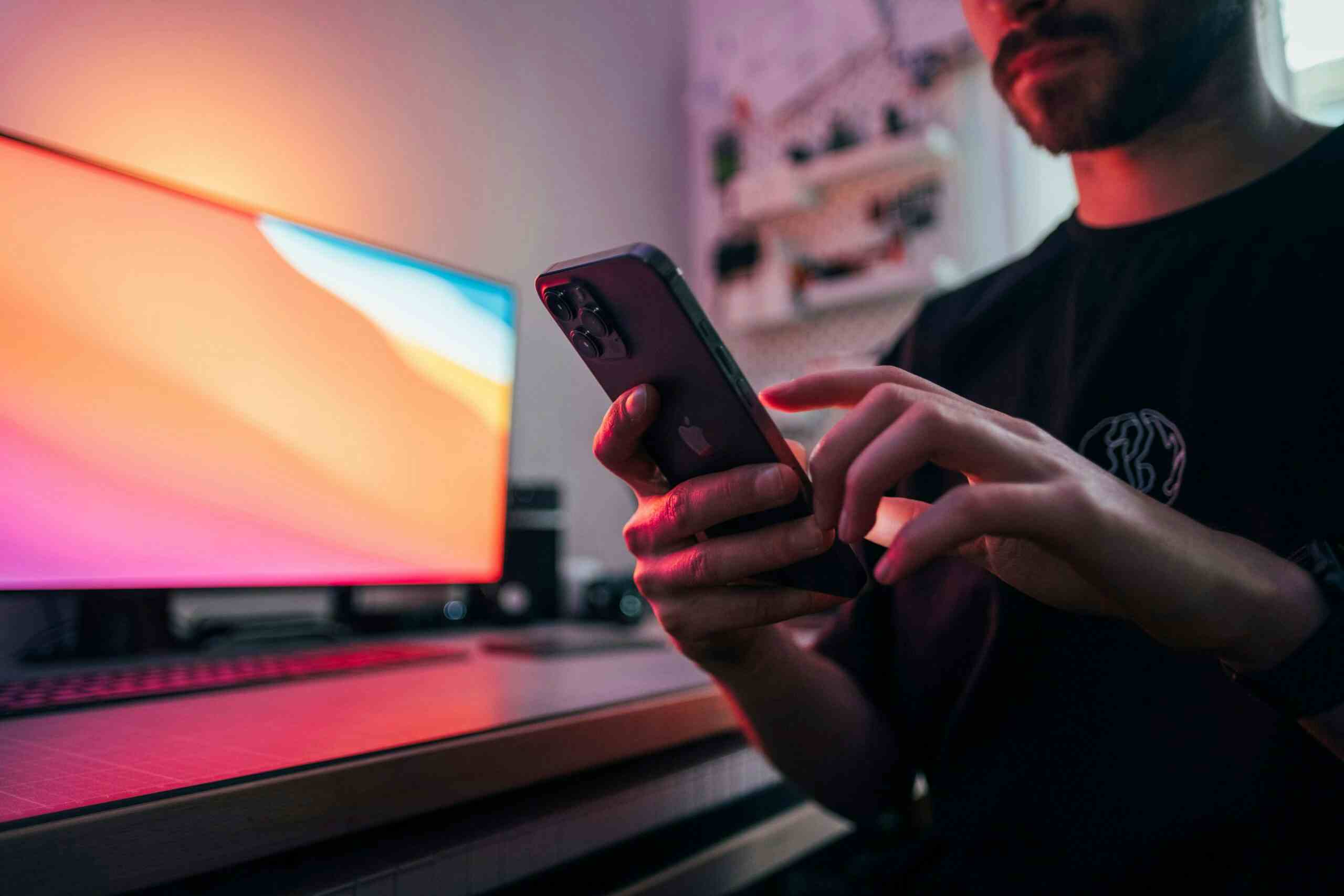What Do Cell Phone Bars Mean?
Posted on 11/16/2022 by Meredith Pond
You probably know that the bars graphic on the home screen of your mobile phone is meant to indicate signal strength. But what do cell phone bars mean, and can you make any decisions based on them? We’ve got all the answers below, as well as a tip for increasing your cell phone signal (despite what the bars might show).
The cell phone bars measure decibels…kind of
Technically, bars measure how many decibels per milliwatt (dBm) of power your phone is getting from the cell phone tower it’s connected to. That’s the definition of signal strength. However, there is no established standard for how many decibels each bar reflects.
The bars (or dots, depending on your phone model) don’t relate to actual dBm numbers — instead, they indicate the relative strength of the available signal.
So the next time you wonder, “what do cell phone bars mean?” Remember that the key word here is relative.
One bar indicates lower signal strength than two bars. And two bars represent lower signal strength than three bars — and so on. Unfortunately, that’s about all the information you get from looking at this little graphic.
The bars will tell you when your signal goes up or down by appearing or and disappearing accordingly. But that doesn’t actually tell you how much signal strength you have in measurable dBm.
How are decibels related to cell phones?
A decibel is a technical unit of measure used with power and sound which measures how intense an electrical signal is. If you’ve worked or played with stereo equipment before, then you’ve probably heard this term, albeit in a different context.
Cell phone bars: consistently inconsistent
As we mentioned, the bars give a rough approximation of relative strength. Viewing the bars graphic alone doesn’t tell you how strong the available signal actually is, nor how much stronger a four-bar signal is than a three-bar signal. For example, you can’t say, “I went up a bar, so my signal is 25 decibels stronger.”
In fact, in some cases, the performance of your phone doesn’t even align with what’s going on with those bars at all. You might have had this experience: Your phone shows four bars, but when you try to text or download a movie, your phone can’t do it. Despite the four cellular bars you see, you have no service.
This can happen because each mobile phone manufacturer — Apple, Samsung, Google and others — uses their own proprietary technology to gauge the strength of available cellular signals. Each also has its own algorithm to measure that signal and present it to you in the form of bars.
So, one phone’s two-bar signal might be -88 decibels while another’s two-bar signal could be -70 decibels (closer to 0 is stronger). The phone with -70 decibels has a stronger connection, but of course, there’s no way to tell that from looking at bars alone.
That means it’s impossible to compare signal strength between different phone models simply by looking at how many bars are displayed on the screen. You might be sitting in the same location with a friend, each with a different type of phone. You could have two bars and have no problems connecting to the internet or sending texts. Your friend could have four bars and experience issues because his or her four bars are representative of less signal strength than your two bars.
The bottom line is this: cell phone bars don’t mean a whole lot.
How to measure signal strength on your phone
So cell phone bars don’t tell you much about the signal strength of your phone. But what if you want to know the actual numbers so you can decide whether you need a new phone or need to take action to boost that signal of yours?
To accurately measure your cell signal strength, you must take a reading of the signal in decibels or dBm.
Even though phone companies all present phone strength measurements differently, decibels are a standard unit of measure. So, when you take a dBm reading, you know the absolute strength of the available signal.
Decibels are typically expressed as a negative number, such as -88. The closer to zero the reading is, the stronger the cell phone signal. So, like in the example above, -70 dBm is a stronger signal than -88 dBm.
A reading of -50 is likely the strongest signal you will see. Signals weaker than -100 dBm are pretty bad, and if the signal gets much weaker than that, you likely won’t have cell service at all.
To measure the dBm reading on your phone, you’ll need to put your phone into field test mode. The steps are different for each phone type. Discover how to find the signal strength on your Android phone or find the signal strength on your iPhone.
Taking this step is the only way to know how strong your available cell signal really is, and it’s pretty independent of the cell phone bars on your display.
Why do I only have cell phone bar?
Usually, one bar of service on your phone means you’re receiving poor signal because you’re too far from the nearest cell tower or something is blocking the signal from getting to your device. As you read above, how “poor” a one-bar signal actually is will depend on your device, but it’s the worst the signal can be, relatively speaking, for each device before you have no service at all.
Some common signal blockers can include building materials such as concrete, steel, brick, fiberglass insulation or wood. Natural obstructions like mountains or trees can also block your signal.
If you’re in a densely populated area such as a major city, the issue of network traffic may arise, too. People assume there’s plenty of cell coverage to go around, but cellular tower resources are limited. If a lot of people are on the same network and tower, downloading things, sending messages or otherwise taking up bandwidth, the tower might struggle to support that level of usage.
How do I get more bars on my cell phone?
Measuring your actual signal strength can help you understand what might be causing lackluster performance with your phone. For example, if you use field test mode, you might find that your signal strength is 10 decibels higher when you’re outside than when you’re inside your home — even though you get three bars regardless.
Those 10 decibels aren’t enough to move the cell phone bars to two or three, but they could be enough to impact performance.
A weBoost cell phone signal booster is a great solution that can permanently receive even weak signal outdoors, boost them, and then broadcast them within your home, business, or vehicle, so you can have a strong, reliable cell signal (and more cell bars) for calls, texts, and data.
All weBoost signal boosters work with all carriers and are FCC-approved, so you can rely on them working with your setup. You also don’t have to pay recurring fees. When you buy a cell phone signal booster, you’re buying the hardware that gets the job done — not a service you subscribe to.
It’s important to note that cell phone signal boosters won’t create a signal if you have no signal at all. But they will boost a weak existing cell signal and bring it inside for you.
Shop weBoost cell signal boosters to get faster data speeds and better voice quality on your device.






